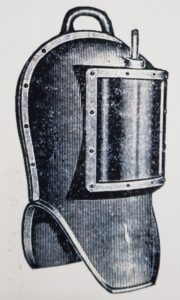The Snead & Company Iron Works
Makers of Structural, Ornamental Iron, and Bronze Work for Buildings
History
Founded in 1849, SNEAD & COMPANY IRON WORKS, of Louisville, Kentucky, was a cast-iron works business that manufactured just about everything. The Snead Manufacturing Building was located at 817 West Market Street on the western boundary of the central business district of the City of Louisville. The building was located on a portion of land that had been owned by the Snead family for several years.
The site of the Snead Building was, in the 1840s, the location of the Market Street Architectural Iron Foundry, which had then had several owners. In 1849 the foundry was purchased by Samuel P. Snead, a son of John S. Snead, prominent Louisville merchant and the organizer and first president of the Bank of Louisville. In 1851 Samuel Snead sold the foundry to Isaac Raphael, a successful dry goods merchant, who placed it in trust for his daughter, Martha Snead, wife of Charles S. Snead &, also a son of John Snead. Charles Snead Became manager of the iron works. According to an article in the Commercial Review in 1857, the Market Street Foundry was supplying cast iron for buildings in many Southern cities as well as in Louisville. By 1855 the company had changed its name to The Snead and Company Iron Works and Charles S. Snead became president of the firm. His son, Udolpho, was vice-president and another son, William, was general manager. The 1876 Atlas shows Snead and Company at the Market Street location.
The firm was one of the country’s leading manufacturers of ornamental and structural cast iron. Ads in city directories and business biographies attest to the wide variety of cast iron products made by the firm. The company had contracts for work on major buildings in many parts of the country, including United States Customs Houses in Louisville, Cincinnati, and Minneapolis; the stairway in the Washington Monument; both structural and ornamental iron work for the State, War, and Navy Building in Washington (now the Executive Office Building); and iron work for the Auditorium Building in Chicago, designed by Adler and Sullivan. Iron work by the Snead Company can still be seen on many Louisville buildings, especially on Main Street. Numerous manhole covers bearing the Snead name are extant along Louisville streets and sidewalks
The Snead and Company Iron Works operated on the Market Street site until it was destroyed by fire in 1898. The company’s operations were reestablished in New Jersey, and Udolpho and William Snead moved east to manage the company. In 1919 their name was shortened to SNEAD & CO. and their office & works were located at the foot of Pine Street, reached by Central R.R. of N.J. Pacific Avenue Station. Over the years the company has produced many different items, including bookends, lamps, window frames, tea kettles, propeller shafts, library bookstacks, dive helmets, coalhole covers, and so much more. Certain specialties were sold directly to the consumer by mail. Snead is well known for revolutionizing the way shelving was done in libraries, generating hundreds of miles of new shelf space. They dominated the bookshelf industry for two generations. Bookshelves from the company can still be found in the Library of Congress and countless older libraries around the world.
The E. J. Willis Company was established in 1888 and was a boating supply company based in New York. Willis produced various catalogs of nautical supplies and in some of these catalogs they listed a WILLIS DIVING HELMET. It is believed that they supplied shallow water helmets made by SNEAD, marketed as WILLIS.

early Snead style 1


Catalogue image

Snead style 1


catalogue image
